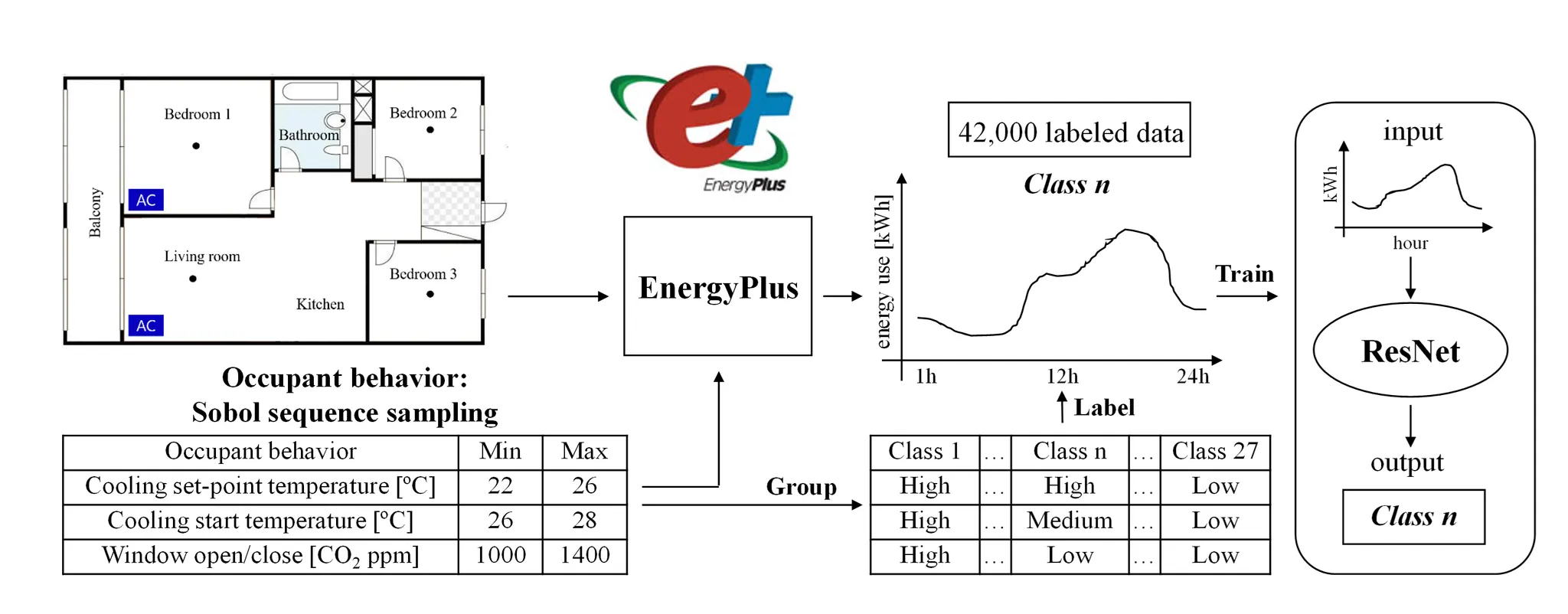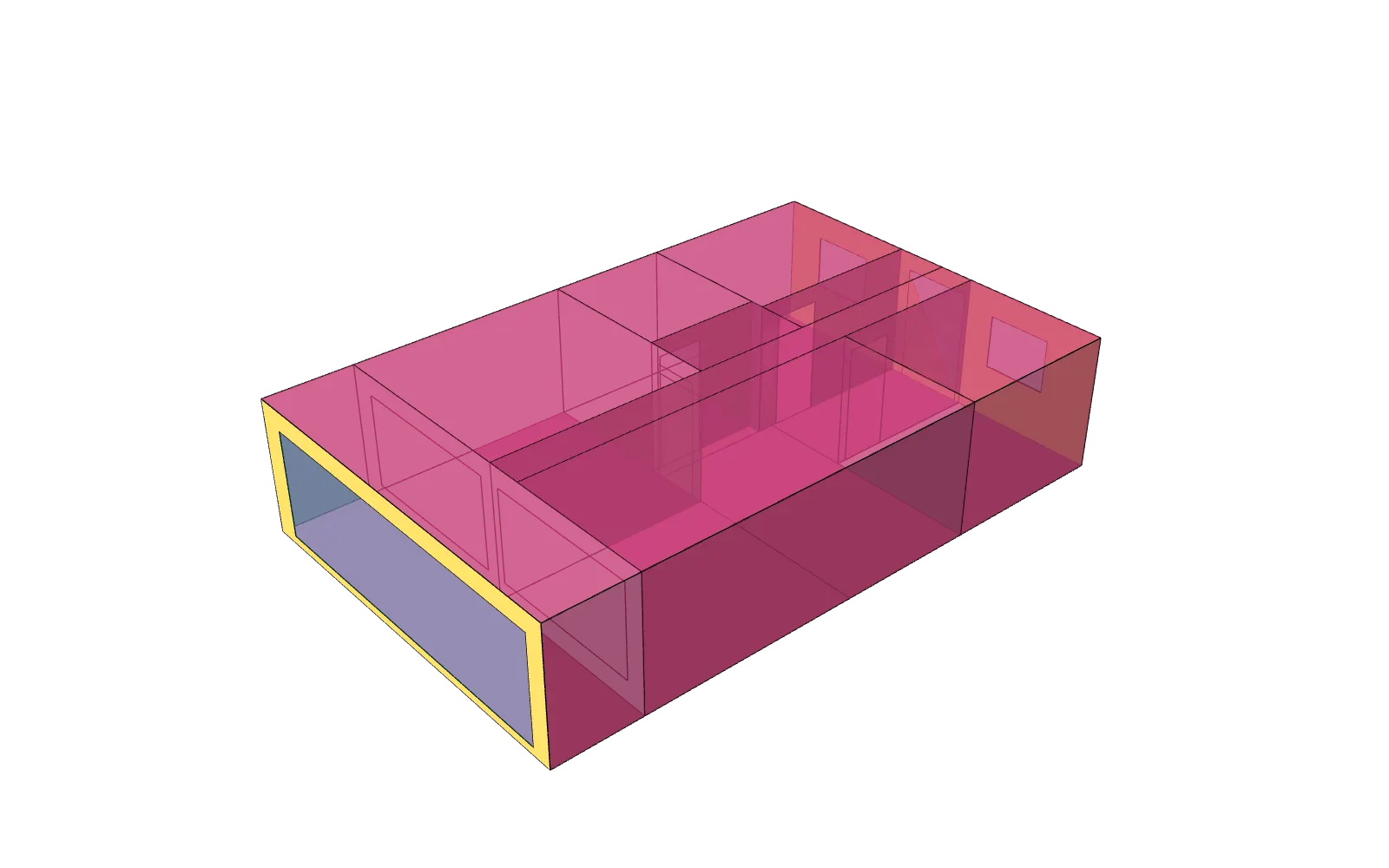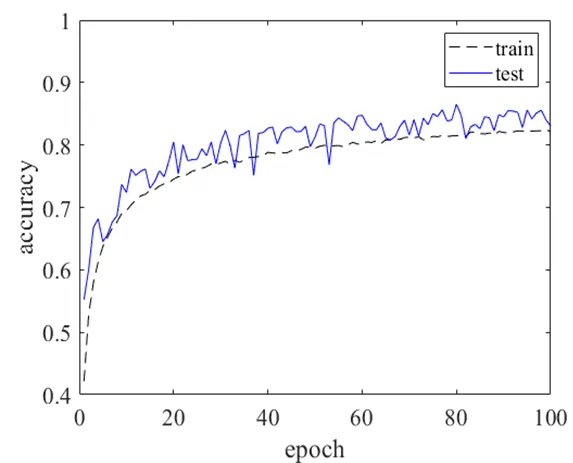•
Abstract
Because occupant behavior (OB) is one of major sources of the performance gap between simulated and actual building energy use, many studies have focused on developing data-driven OB models. However, developing accurate OB models demands large amount of detailed data containing occupant information. Unfortunately, collecting such occupant data is difficult due to privacy and sensor installation. This study aims to present an inverse approach to estimate OB from measured end-use energy data, or hourly aggregated electricity consumption data of a household. For this purpose, occupant behavior patterns (cooling set-point, cooling start temperature, window open/close) were propagated (27 classes, 42,000 samples) and EnergyPlus, one of the most sophisticated dynamic simulation tools were employed. The developed residual neural network (ResNet) model is successful (accuracy level = 86.3%) for identifying the aforementioned occupant behavior patterns.
•
Workflow
•
Data praparation
◦
Target building: 87 households in a residential building located in Seoul, South Korea
(a) View from North (b) View from West (c) Floor plan (55 m2) of households
◦
Building energy modeling using EnergyPlus
▪
Simulation inputs
◦
Occupant behavior modeling (rule-based)
▪
It is assumed that each agent (i.e. occupant) in a household follows the rules defined in this study
◦
Occupancy schedule collected by the field survey
Occupancy schedule of a household out of 87 households
•
Training and Validation
◦
Validation accuracy of ResNet model for identification of three occupant behaviors
◦
Accuracy evolution of ResNet model for 27 occupant behavior patterns








